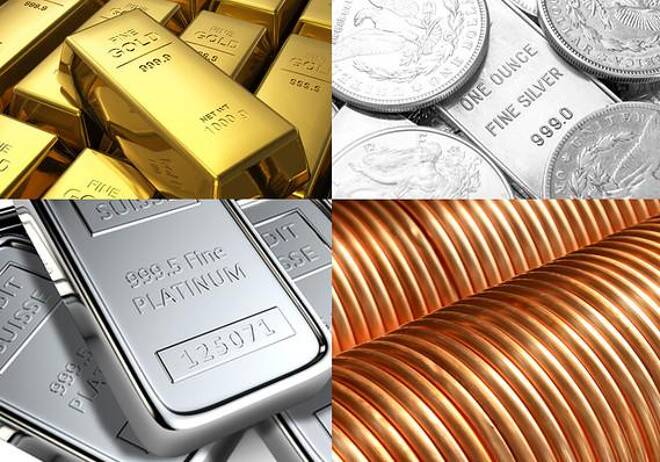Advertisement
Advertisement
The Strong US Dollar Weighs On The Metals Sector
By:
Gold climbed $1.70 to trade at 1104.30 recovering some of Tuesday’s losses as Asian traders take advantage of the dip to buy up the cheaper commodity.
Traders are waiting to see if the U.S. central bank will raise rates this week for the first time in nearly a decade. The Fed will begin its much awaited two-day policy meeting on Wednesday, with a statement expected on Thursday. The uncertainty over the timing of a rate hike has weighed on gold all year, sending it down over 6 percent. Higher rates could dent demand for non-interest-paying bullion, while boosting the dollar.
Data on Tuesday showed U.S. consumer spending grew at a fairly healthy pace over the past two months, pointing to underlying strength in domestic demand that could strengthen the case for the Fed to hike interest rates on Thursday. While other data showed continued weakness in manufacturing, economists said that was unlikely to have much impact on the U.S. central bank’s decision.
In other industry news, South African unions were divided on whether to accept the latest wage increase offer from gold producers, raising the risk of strikes in a sector suffering from low prices and rising costs.
The U.S. Federal Reserve, facing this week its biggest policy decision yet under Chair Janet Yellen, puts its credibility on the line regardless of whether it waits or raises interest rates for the first time in nearly a decade.
In a way it is a “damned if you do, damned if you don’t” situation for the Fed despite months of fine-tuning its message, dissecting economic data, and carefully building a consensus around the idea of a cautious and gradual “lift-off” from near zero rates towards levels it considers normal.
A chorus of prominent detractors, including former U.S. Treasury Secretary Lawrence Summers, argues raising rates now would be wrong given market turmoil caused by worries about China’s economic health and global growth, and the absence of inflation risks at home. Lackluster Chinese data is weighing more on silver and platinum than on gold at the moment. Silver is trading at 14.34 and platinum is at 960.25.
Base metals are feeling the pinch as the greenback gains. Copper is trading at 2.421 down by 7 points but off lows seen late last week. Palladium is down $4.50 at 597.33. Copper prices tumbled to a one-week low on Tuesday as jitters about demand from China fuelled negative sentiment, which was also undermined by lower equity prices in Shanghai.
Benchmark copper on the London Metal Exchange was down 0.96 percent at 5,258 after hitting a low of 5,251. Disappointing industrial output and investment data over the weekend reinforced the view that China, which accounts for about half of world’s copper consumption, could miss its 7 percent growth target this year. “For base metals the sustained weakness in China is the main factor and we are still seeing Chinese equity markets falling,” Danske Bank analyst Jens Pederson said.
“The big story this week is the Fed. Will they hike, will they postpone, what will they communicate?” The US Federal Reserve’s two-day meeting concludes on Thursday.
Expectations are that it will keep interest rates steady. But some analysts expect the Fed to raise rates, which would bolster the dollar, hurting industrial metals priced in the currency. China equities have lost about 6 percent this week after a 40 percent dive over the summer.
Aluminum was down 1.2 percent to 1,602, after hitting 1,590, its lowest since Sept. 2. Zinc was the biggest loser, shedding 3 percent to 1699.50, its lowest in more than two weeks, as the market fretted about rising stocks in LME-approved warehouses.
About the Author
Barry Normanauthor
Did you find this article useful?
Latest news and analysis
Advertisement
